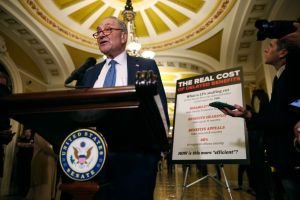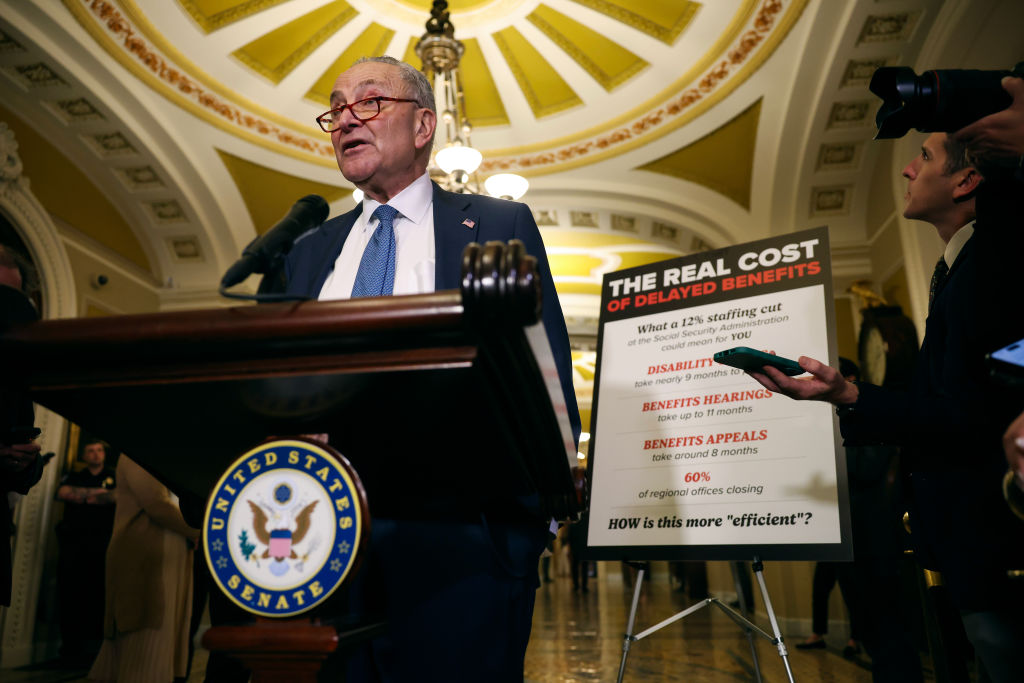At the turn of the twentieth century, Saturday Evening Post editor and Yale dropout George Lorimer bitingly summed up academia when he said “colleges don’t make fools, they only develop them.” On the heels of yet another multibillion-dollar Biden administration college bailout, it seems we haven’t learned the lesson: colleges might not make fools, but they’re certainly trying to make fools of us.
The bailout projects come from a Biden campaign promise: “I will eliminate your student debt.” Half-slogan, half-bribe, this resonated with millions burdened by the unpayable debt brought on by liberal arts degrees that may barely be worth the paper they’re printed on. Looking at the particulars of the administration’s latest student-loan forgiveness scheme, the Saving on a Valuable Education (SAVE) plan, we’re confronted with the reality that these well-intentioned promises might be less about financial liberation and more about shifting burdens from those with critical-studies degrees onto those who made slightly better choices in life.
The truth is we’re nursing a self-inflicted wound — a collective gullibility where universities peddle degrees of dubious value and students lap them up. It’s clear a different approach is needed — one that doesn’t just bandage the wound but prevents it from happening again. To get there, we need to understand how we got here.
Post-World War Two America had a problem. Hundreds of thousands of men were coming back from combat ill-prepared for an evolved labor market. The country needed a newly skilled workforce to propel the development of new technology and bolster national security. The GI Bill was born.
President Lyndon B. Johnson oversaw the expansion of a college aid system from the GIs to the general population as part of his Great Society. His vision was restrained and pragmatic, imagining that each degree would come with work-ready skills and ultimately help to fight poverty. While the most progressive universities used the Sixties to make a scene on campus, most Americans still looked at college as a practical step to climbing the socioeconomic ladder — as then-governor Ronald Reagan said in 1967, amid campus unrest in California, the government isn’t in the college business to “subsidize your intellectual curiosity.”
That sentiment toward college remained grounded in practicality for decades.
But something was about to drastically change. Over the decades, in the popular culture and workforce, a college degree went from “nice to have” to “must have.” When Barack Obama was elected, his “College for All” promise represented a shift in doctrine; a shift from subsidizing college for those who both need and earn it, to a crusade that treats college as just another step of an already-bloated education system. Today, a college degree has become the societal gold standard, inflating the currency of higher education and cleaving a divide between the college-bound and the rest of working America who couldn’t help but hear: “no degree, no worth.”
Institutions were quick to rise to the challenge: make more degrees, easier degrees, and make ’em fast. Here was the perfect con, executed with academic finesse. During the Obama presidency alone, the number of university degrees awarded rose by over 26 percent. From 2004 until today, the cost of those degrees rose by 157 percent. A big portion of that money was quickly soaked up on administrative and other non-faculty staff, which have increased by 164 percent and 452 percent respectively over the past forty years. Today, American campuses may have three times more administrators than faculty.
And the colleges, in an arms race to lure more hapless teens, shoveled even more money down the tubes.
Campuses transformed into veritable all-inclusive resorts, with climbing gyms, concert halls and opulent facilities, all under the guise of enhancing the “college experience.” Over the past twenty years the median university increased its spending on facilities by more than 38 percent, well outpacing even the inflated enrollment numbers. The University of Kentucky, during that time, was reported to have spent $805,000 on their campus… every day.
They were the Tinder Swindler of academia, but instead of hitting up a handful of desperate women, they preyed on millions of desperate teens. They whispered sweet nothings — of future success, of climbing walls, of coed-thronged 50,000 square foot gyms — all while their hands dipped into the deep pockets of government-backed loans. It was a masterstroke of deception, colleges playing both the trusted advisor and backdoor swindler: drive up demand, gouge prices, spend lavishly and let the government backstop it when it all falls apart.
The recently enacted SAVE plan — writing off as much as $20,000 in qualified debt per student — follows a $9 billion loan-forgiveness allocation made just last fall. Both massive spends represent workarounds after the Supreme Court struck down an even bolder, more comprehensive plan to erase $20,000 of debt apiece for all borrowers across the board. With another $1.2 billion wiping away more than 150,000 enrollees’ debt in February, Biden has racked up a $138 billion bill funding his student loan write-off projects.
What the Biden administration’s policies gloss over is a fundamental economic truth: debt cancellation isn’t an erasure but a transfer. The debt doesn’t vanish; it merely shifts from the ledgers of graduates to the tax bills of the wider population. This includes skilled tradespeople, who, by choice or by circumstance, chose paths that didn’t lead through college gates. This wealth transfer would likely cost the average union electrician just under $3,850 each year. That’s a modest family vacation or renovations to a home, gone to fund the colleges and universities who bear no weight of the responsibility.
It’s a short-sighted policy that not only empowers colleges to hike up tuition, feeding their expansion frenzy, but sets the public up for a recurring nightmare. Without meaningful change, we’ll find ourselves back here, likely in an election year, pen poised for another round of debt write-offs.
The student debt crisis calls for solutions that not only offer paths to solvency for those in debt but ensures these paths don’t unjustly absolve debtors of their responsibilities. Let’s squarely place the burden on those who orchestrated and participated in it.
We should hold colleges accountable for the degrees they hand out and the loans they approve. Think of it as the academic world’s version of a store-return policy. If the government wants to allow students to discharge their debt, the debts should be paid out of the billions of dollars sitting in endowments. This isn’t merely about refunds; it’s a mechanism to hold universities accountable for the practical value of the education they provide. When courts found Trump University to be a scam, they demanded that Trump University refund the tuition to students. Why should this be different?
Those who demonstrate that their degrees haven’t led to reasonable employment would simply apply for a “refund” from their college or university. The student is then expunged from the records of degree-holders and the university must consider them a dropout.
This puts accountability on both parties. For universities, it creates accountability both financially and in reputation. As dropout rates climb for the degree mills offering hundreds of refunds, universities risk falling in the ever-important college rankings and, if the dropout rates really spike, they risk losing funding and accreditation. For graduates, this policy presents a stark choice: hold onto a degree that hasn’t paid off, or relinquish it for financial relief, forcing a reckoning with the true value of their educational choices.
Imagine a world on the other side of the program, where universities build degree programs to meet the needs of the labor market and students are more selective about their choices.
It’s election season and it’s no surprise that the current administration is finding new ways to write checks to Americans, but we cannot let ourselves be fooled.
This isn’t just about debt relief; it’s about reshaping a system to prevent future folly. In essence, it’s time to revert to an era where colleges were merely accused of developing fools, rather than actively making fools out of all of us.
This article was originally published in The Spectator’s April 2024 World edition.


























Leave a Reply